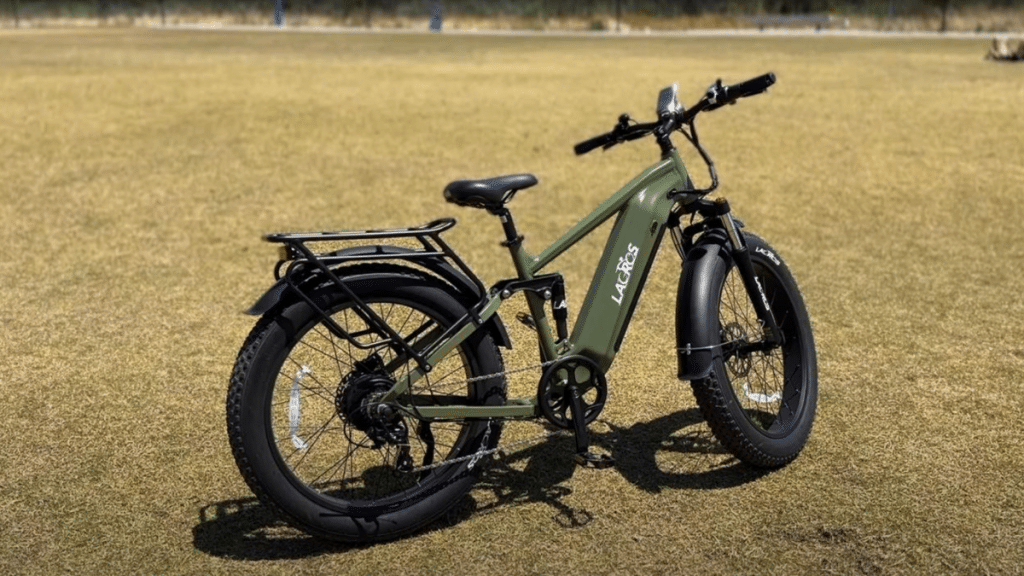Mountain e-bikes have taken the cycling world by storm. These bikes mix the thrill of mountain biking with a touch of extra power. They’re gaining popularity among outdoor lovers and people wanting an easier commute. But many wonder: Are mountain e-bikes easy to ride? Do they suit beginners or someone new to cycling? In this article, we’ll explore what makes these bikes user-friendly and what factors affect how simple they are to handle.
What Are Mountain E-Bikes? An Overview
Mountain electric bicycles are bikes designed for rough terrain but with an electric motor to assist pedaling. Unlike regular mountain bikes, they come with a small motor and a powerful battery that helps you pedal up hills or tough trails. This makes riding less hard and more fun. There are different types of mountain e-bikes, such as:
- Hardtail e-bikes, which have suspension only in the front
- Full-suspension e-bikes, with shocks in both front and rear for smoother rides
- Fat-tire e-bikes, with extra-wide tires for sand, snow, or muddy trails
Each type offers different advantages, but all aim to make mountain biking more accessible and enjoyable.
Key Features That Influence Ease of Riding
Understanding some core features of mountain e-bikes helps explain whether they’re easy to ride. Let’s look at the most important aspects.
Motor Assistance and Power Settings
The motor is what makes e-bikes stand out. It takes some work off your legs, but the level of help varies. Common assistance modes include low, medium, and high.
- Lower settings provide gentle help, ideal for beginners.
- Higher assistance makes it feel like biking on flat land, even if the trail is tough.
Brands like Shimano and Bosch offer intuitive controls that make switching assistance levels simple. Starting with low help helps new riders grow confident without feeling overwhelmed.
Frame Design and Ergonomics
The shape and layout of the bike greatly affect how easy it is to handle. Bikes with a relaxed frame geometry are easier to balance, especially for new riders. Adjustability also matters—being able to set the seat and handlebars to your comfort level makes a huge difference.
Heavier bikes can feel sturdy but might require more effort to maneuver, especially for those with less strength. Lighter models, on the other hand, make quick turns and technical climbs easier.
Suspension and Tire Choices
Good suspension makes rough trails feel smoother, reducing fatigue and making riding less jarring. Soft shocks absorb bumps, helping you keep control.
Tire width and tread pattern also matter. Narrower tires are faster on smooth terrain, while fat tires offer stability and grip on loose or uneven ground. Terrain type plays a big role—what’s easy on one trail might be difficult on another.
Factors That Affect the Rider’s Experience
While the bike’s features are important, rider skill and terrain also shape how easy the bike feels.
Rider Skill Level
Beginners may find mountain e-bikes easier due to the motor support. But it still helps to learn basic riding skills first. Experienced cyclists might navigate trails faster and with more confidence, but even they benefit from the boosted power.
Choosing the right bike depends on your experience. A beginner should look for models with easy-to-use controls and moderate assistance modes. More seasoned riders may prefer bikes with advanced features for tougher trails.
Terrain and Trail Conditions
The type of trail makes a big difference. Rocky, muddy, or steep trails are naturally more challenging. Electric assistance helps, but only if the bike suits the terrain.
For example, fat-tire bikes excel on snow or sand, making rides easier and safer. Smooth trails require less power assistance. Always match your mountain e-bike to the terrain for the best experience.
Physical Fitness and Age
Electric bikes help extend your riding range and reduce the physical effort needed. This is great for older riders or those with limited strength. Even if you’re not highly fit, mountain e-bikes can make mountain biking enjoyable and less exhausting.
Data shows that e-bike riders often ride longer and more often than traditional bikers. That’s because the added help makes tough climbs and long rides much less daunting.
Practical Tips for Making Mountain E-Bikes Easier to Ride
Want to get the most out of your e-mountain bike? Follow these simple ideas:
- Fit the bike properly—adjust the seat height and handlebar position for comfort.
- Learn basic riding skills such as how to handle corners and control speed.
- Use assist modes wisely—start with low levels and increase help as confidence grows.
- Maintain your bike regularly—keep brakes, tires, and suspension in good shape.
- Consider professional lessons or guided trail rides for extra tips.
These small steps can boost your riding experience and make mountain e-biking more enjoyable and less intimidating.
Expert Insights and Real-World Examples
Leading brands like Bosch and Shimano emphasize user-friendliness. They design systems that are easy to operate, even for newcomers.
Many beginner riders have shared success stories about tackling mountain trails on e-bikes. One rider said, “I never thought I could handle such rough terrain, but the electric assist made it feel almost easy.”
Trail riders of all skill levels agree that with the right bike and a little practice, mountain e-bikes can be fun and surprisingly simple to ride.
Conclusion
When chosen and adjusted properly, mountain e-bikes are generally easy to ride. Features like motor assistance, thoughtful design, and suspension work together to make off-road biking accessible. Of course, your skill level, the terrain, and how you set up the bike matter a lot.
If you’re new to off road ebikes, start slow, use lower assistance, and practice basic skills. With time and the right bike, mountain e-biking becomes an exciting adventure, not a chore.
Ready to hit the trails? Pick a suitable e-mountain bike, learn the basics, and enjoy the ride safely. Mountain e-bikes are a fantastic way to explore nature while making biking easier and more fun for everyone.
